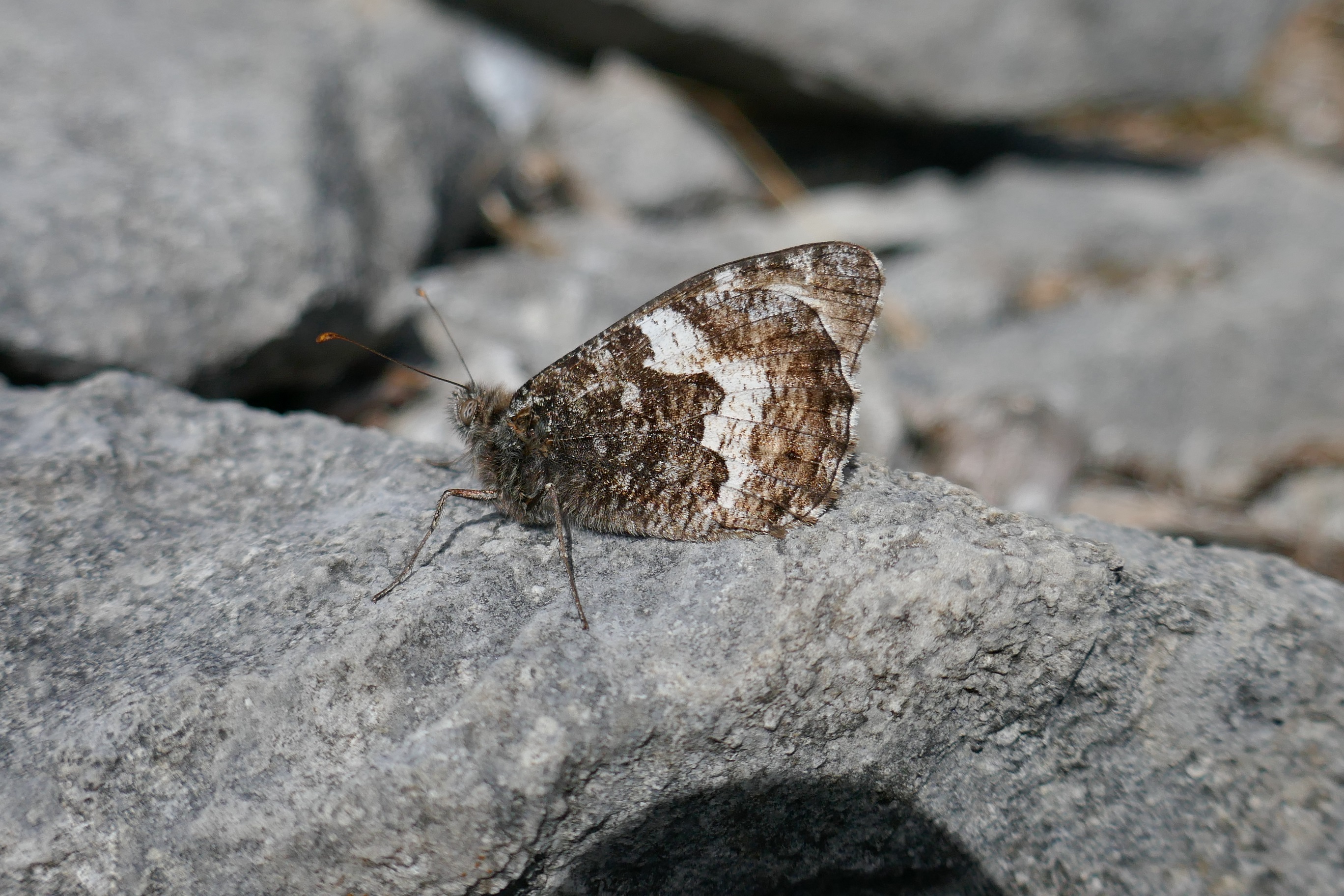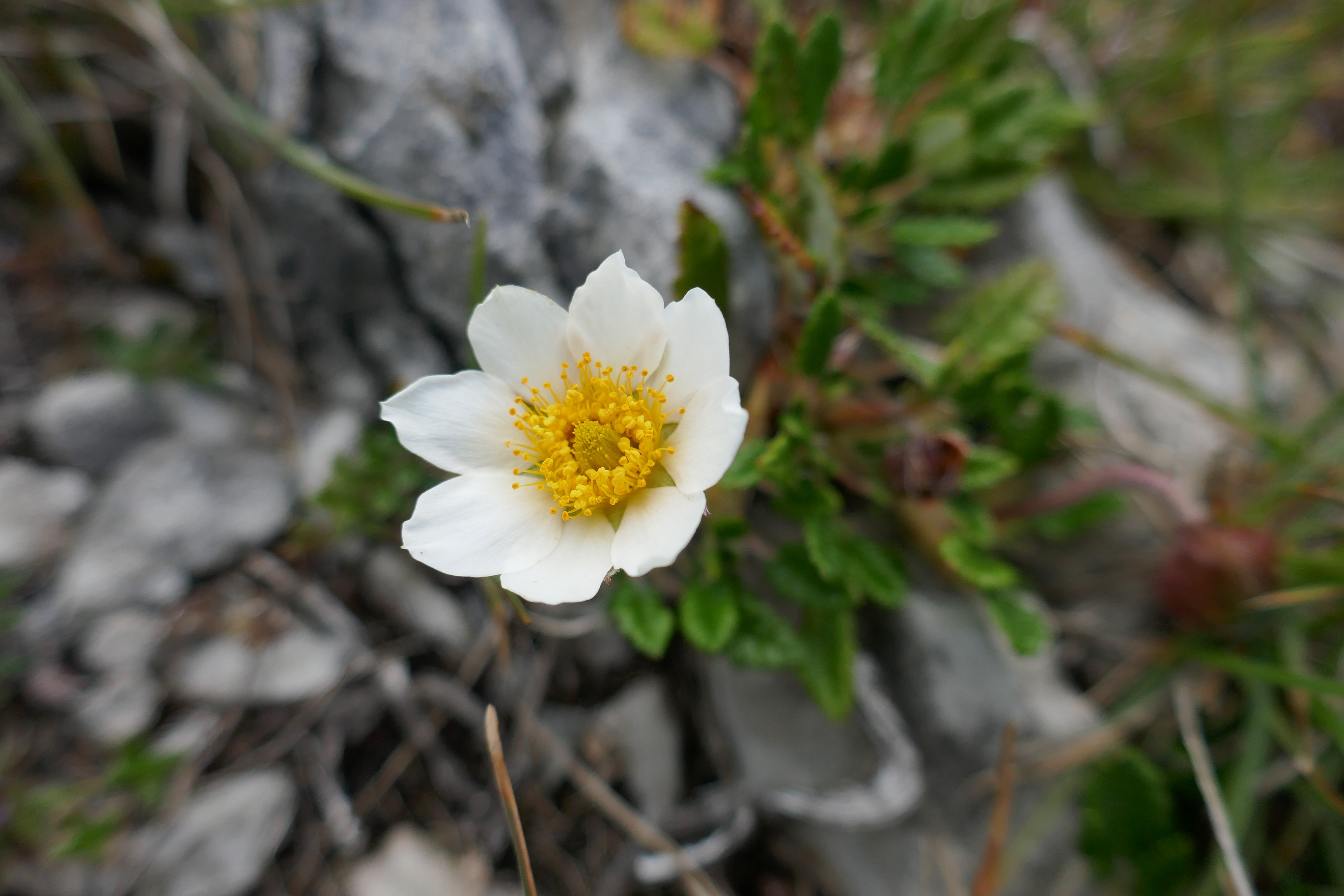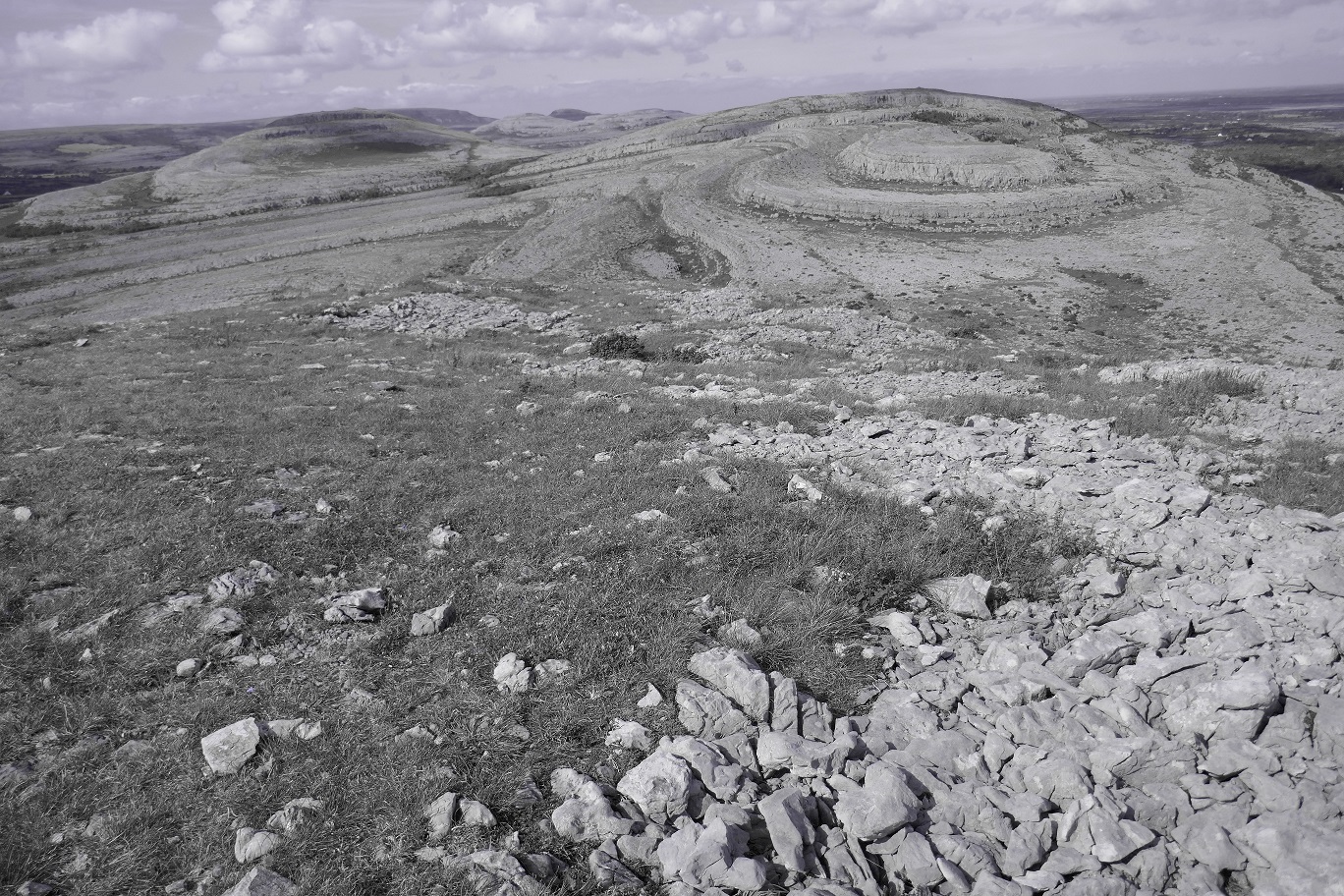
Our Burren outing began at 10 am when we gathered at the unofficial car park at the crossroads in the Burren National Park. The sky was grey, streaked with pale, fearful blue but the air was still, with a hint of warmth. Perhaps we would be lucky.
Following introductions, we over-stepped a low Burren wall and entered the area north of the road, where limestone pavement, open grassland, and scrub are beautifully flower-rich, with the heavily sweet influence of Fragrant Orchid flavouring the breeze, imbuing the atmosphere with alluring exoticism. To be there at this time of the year is to step into a dream world. August may be seen as summer grown old, a little wrinkled from its long exertions, frayed and browning, the glowing bloom of earlier days thinning and paling, paradise lost. The grasses are tinged with oatmeal, the light lower, sharper, flowers bedraggled.
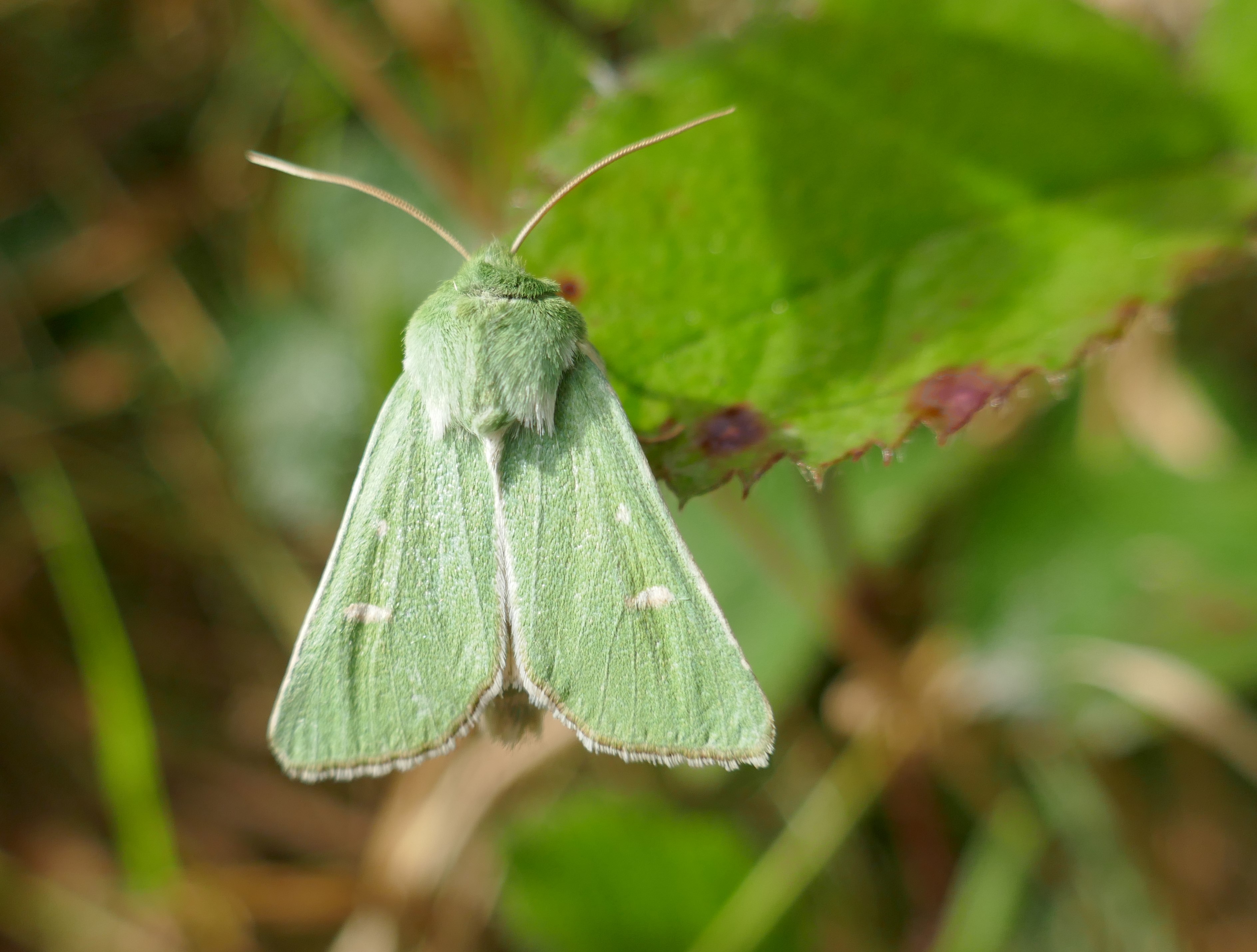
The jaded look is challenged by the arrival of freshly hatched butterflies, especially our latest butterfly to take flight, the Brown Hairstreak, our main priority for this day. The Brown Hairstreak is the last Irish butterfly to emerge each year. Speckled Wood-sized, it is a most elusive species, common nowhere in Britain or Europe. Ireland has most of its brown Hairstreak populations in the Burren, with scattered presences in west Tipperary, south Galway, and in Mayo near Lough Corrib. But it is not easy to find, especially where tall oak trees occur, for the more active males tend to occupy tree-tops, rarely descending. The Burren has fewer tall trees, and very few oaks so we do see males at eye level, feeding on nectar, rather than aphid secretions on oak leaves.
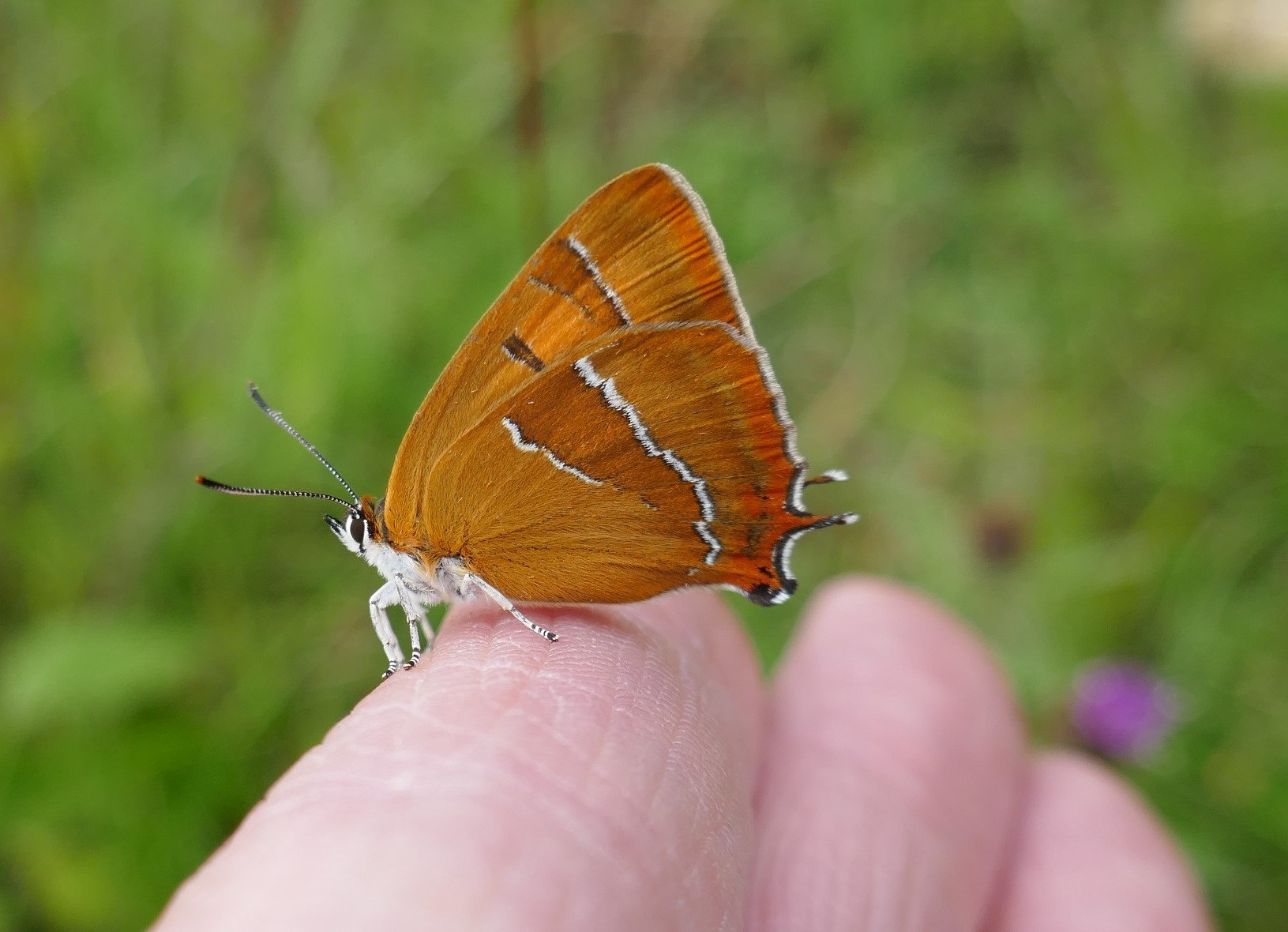
Females are especially richly coloured with warm orange-brown undersides, while males usually look paler. Males are more active, jinking around the canopy, especially in the mornings, seeking newly emerged females. Mated females and males spend the long afternoons feeding on bramble and tall hedge side Creeping Thistles.
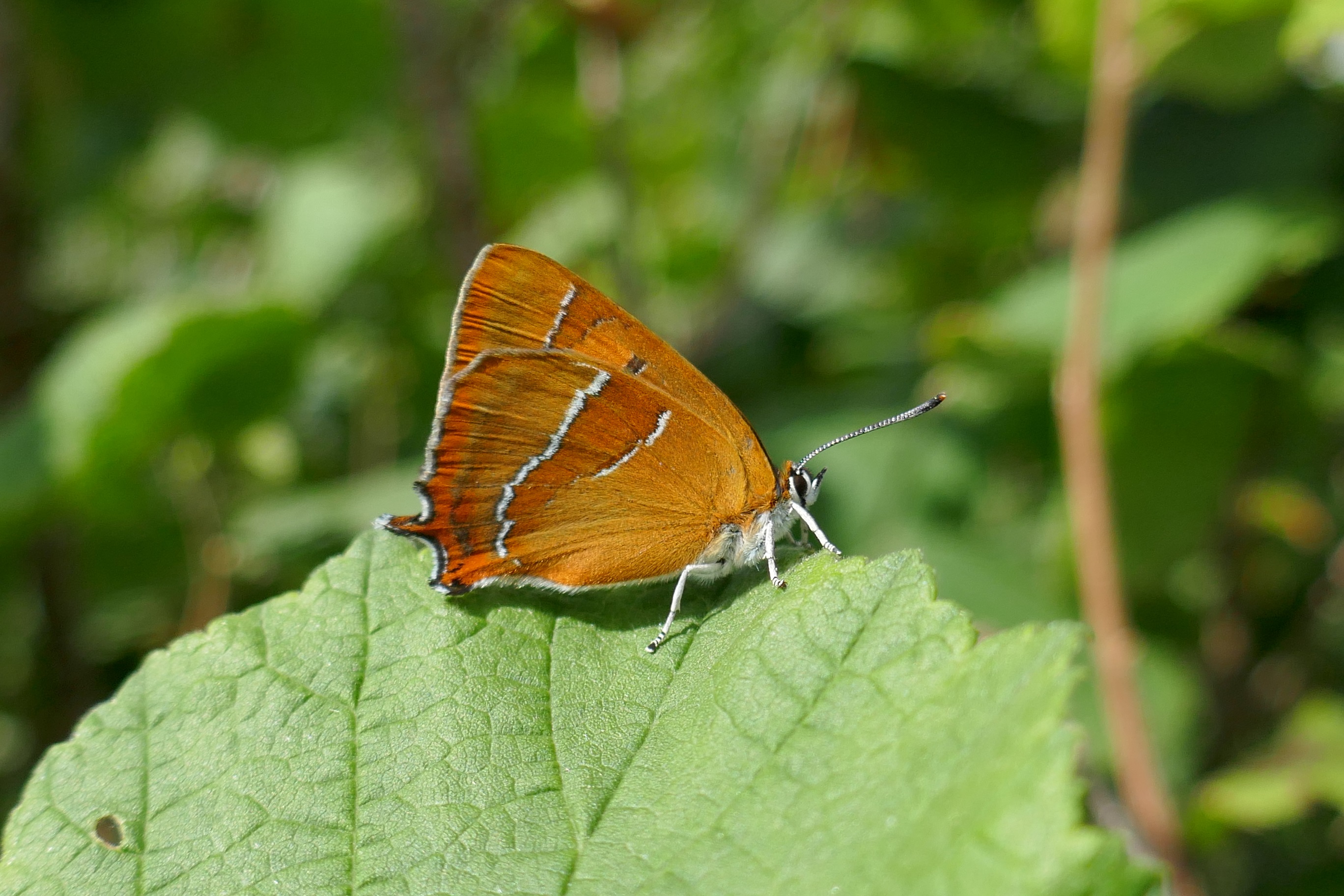
The overcast weather was against us, because the hairstreaks typically perch quietly on tall scrub, typically on hazel in the Burren. Before we reached likely habitat, we noticed the large population of fresh-looking Meadow Browns, sharply different from the diminished populations in the east, now in rapid decline, their life’s work already done. Common Blue, Small Copper, Ringlet, Grayling, and the occasional Small Heath were encountered in the tall sward.
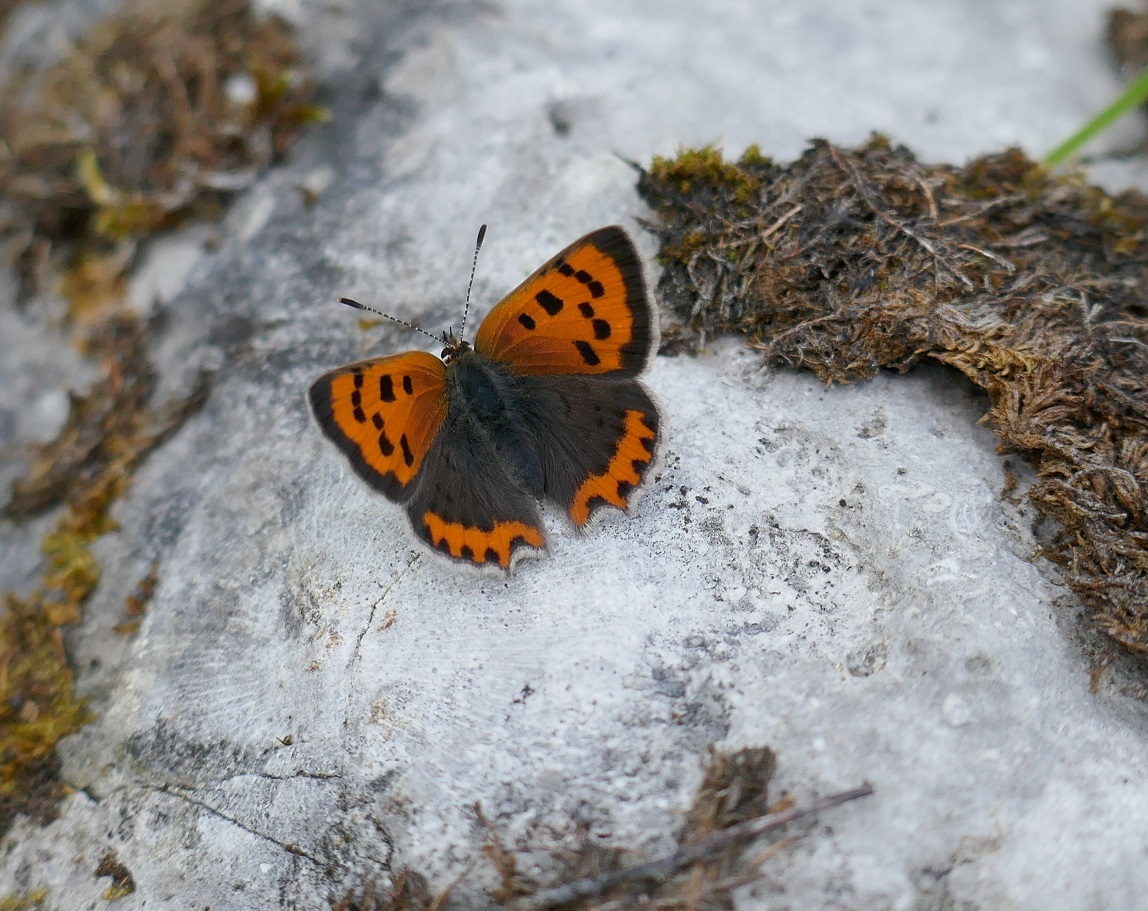
The scrub patch identified in previous years as a good source of Brown Hairstreak sightings was searched. Nothing at first but high up one was seen, restless around the canopy before settling, wings ajar, on hazel. We failed to coax it to land lower down, but at least we knew they remained faithful to their patch. “If it brightens up, and you’re still around, you should find more here.” I learned that this is what some of our group did in the afternoon when the sunny weather appeared. A female was also found later, and they are rather lovely, in their tame, quiet, approachable way.
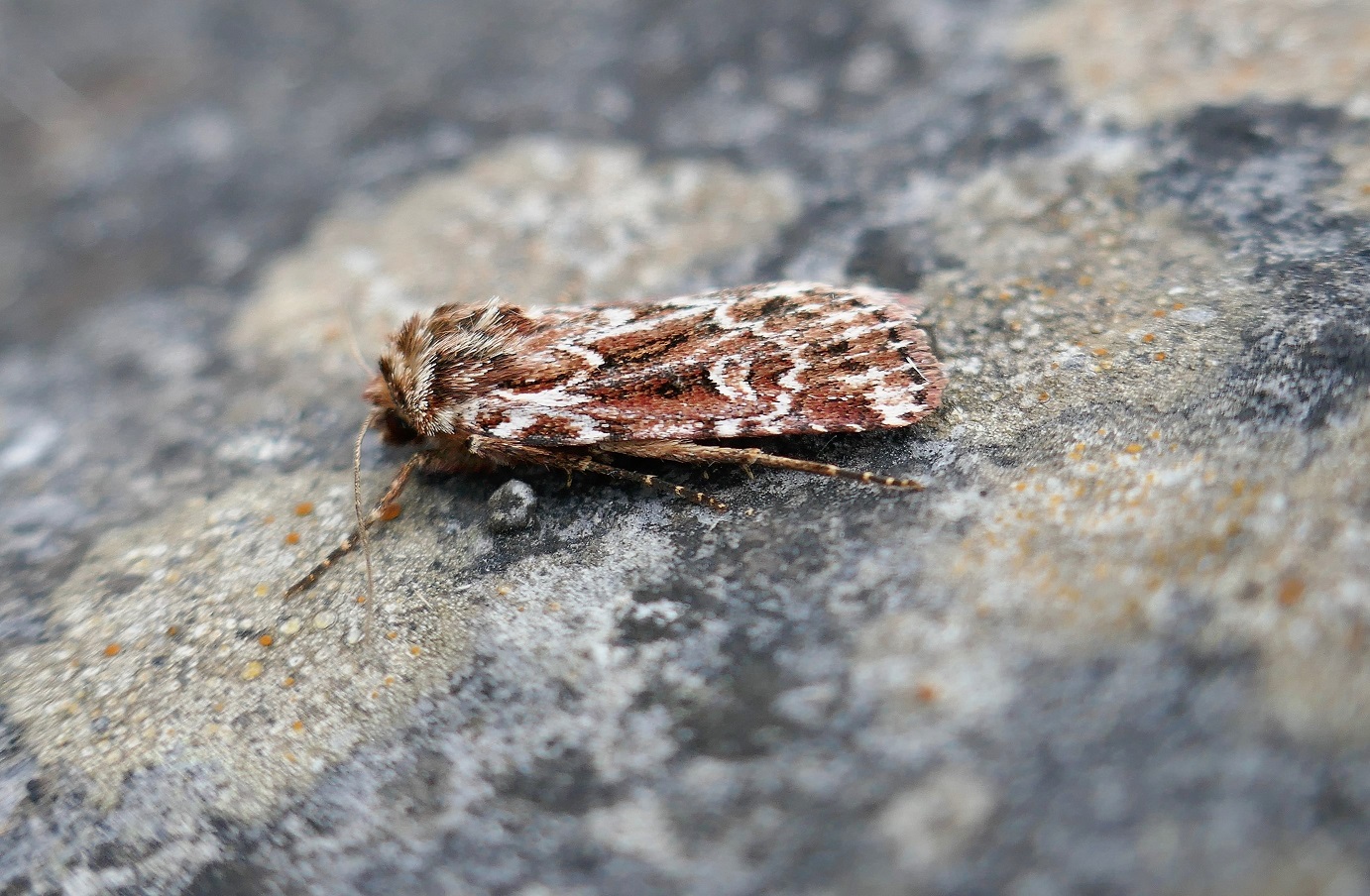
Later we crossed the road, finding another traditional haunt and another, less camera-shy male, who did fly down to feed on Creeping Thistle. A male Vapourer Moth was seen and photographed close by, a nice addition to the Burren Green and True Lover’s Knot moths caught the night before and shown to our group.
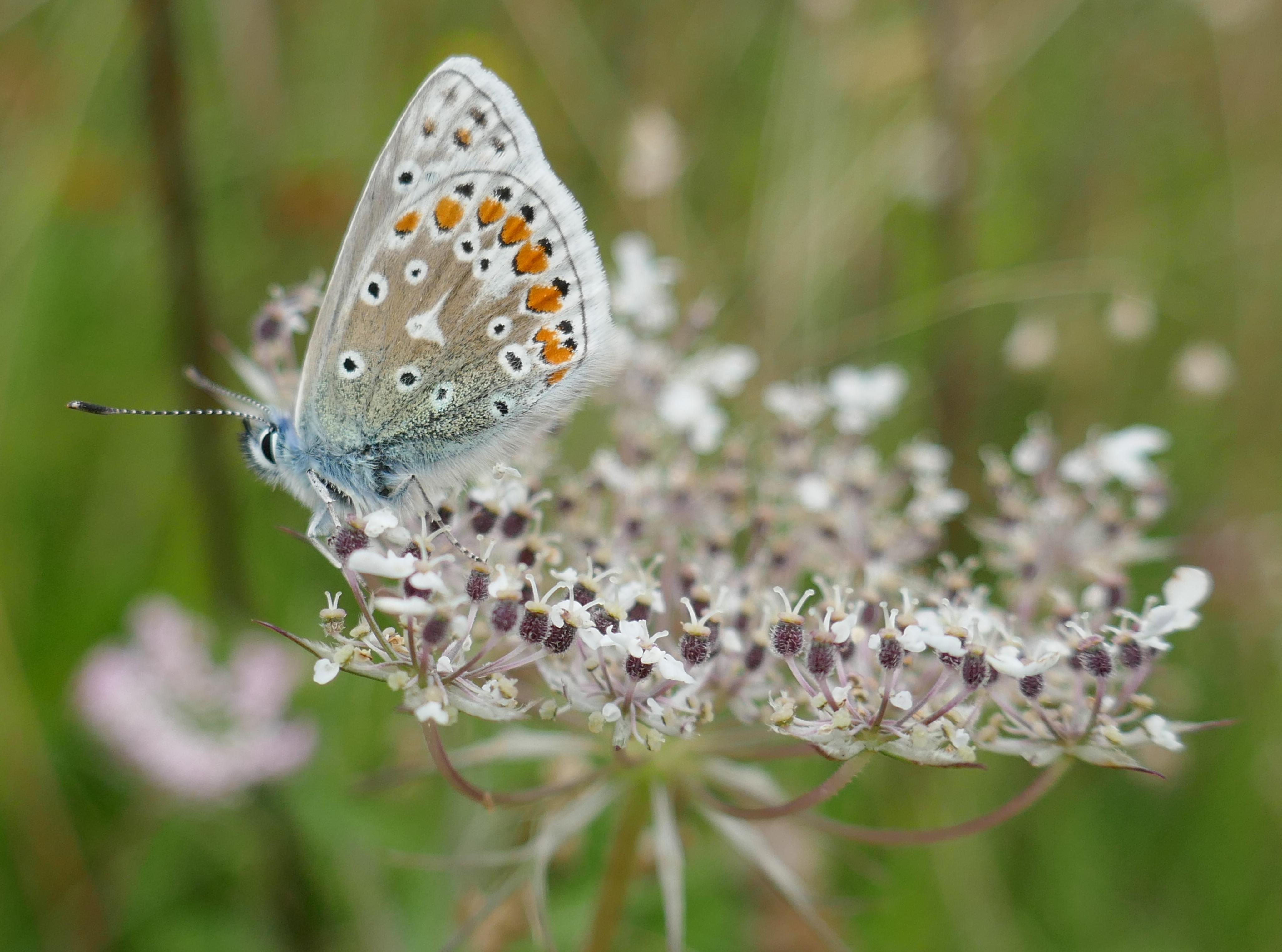
We later returned to our cars, for refreshments, and positive feedback on our outing. A great thank you to all who joined our outing, some having made long journeys to share an experience with nature. May the sights we saw live on in our memories, and may the amazing Burren continue to hold its amazing depth and range of wilderness and biodiversity.
